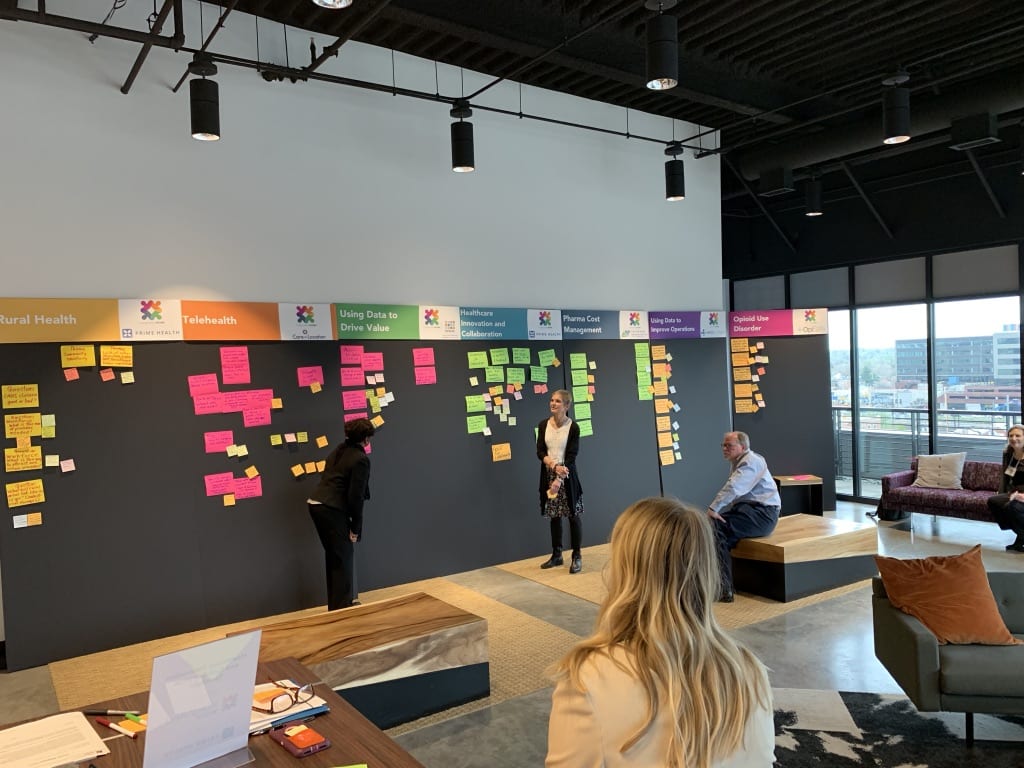The Future of Work is Integrated

by: Jennifer Simpson
Today’s problems can’t be solved in back rooms, behind closed doors, or by a lone genius. Only when we “zoom out” and take a broader view can we find truly innovative solutions that will yield lasting results to today’s most complex challenges. Getting broad buy-in also tends to be easier when we look at the big picture and engage a broad cross-section of people who have a stake in the issue.
The Institute for the Future has spent more than fifty years helping organizations and communities look back from the future to make smarter decisions in a present that is increasingly volatile, uncertain, complex, and ambiguous. The people who will be most successful is this rapidly changing world will be system leaders who know that integrated approaches to problem solving are more powerful and effective than isolated ones, especially on complex issues.
Many systems facing large-scale complex change are confronting the need for greater integration in solving seemingly intractable problems. 20+ years of experience working with leaders tackling these large-scale problems has reinforced adage that if you want to go far, you must go together and that “integrated work” that truly connects the dots in a system-level challenge will produce more innovative and sustainable impact.
All around us, systems ripe for innovation are making new efforts at connection. The idea behind much STEM (science, technology, engineering, and math) education today, for example, is that learning these disciplines together accelerates problem solving. More and more, educators are adding an “A” to this model (STEAM adds the “arts” into the mix), recognizing that true innovation in even the most technical disciplines benefits from creativity and artistic aptitude and that artists at heart also benefit from more technical design thinking.
Likewise, more and more healthcare systems are moving to an integrated care model where an individual patient is cared for by a team of providers who take a more coordinated view of their health vs treating symptoms in isolation. Environmental Ecosystem work also requires this kind of integrated approach. A 2014 effort by the America’s Watershed Initiative, for example, brought together stakeholders across the Mississippi River Basin to collectively address everything from recreation to water supply, and flood control to transportation alongside economic and ecosystem issues.
A more isolated approach is less effective because when we look at something apart from the broader system it sits in we both magnify and mask the effects of individual parties. It can look like a problem “belongs to” a given organization, geography, or industry, but in most cases complex problems can’t be solved by any one entity. Any attempt to do so inevitably tends to take on symptoms of the problem, not the problem itself.
Much of the best innovation today leverages processes like the ”Design Thinking Bootleg” approach developed by the Stanford d. School[i] and the human-centered design tools pioneered by IDEO to deeply immerse in a problem to generate lots of creative solutions, and then rapidly prototype potential options. Likewise, the Collective Impact model has been designed to provide a structured way for people to come together across interests to solve problems they have a shared stake in.
 At Integrated Work, we’ve taken the best of these approaches and integrated them into our own Impact, Amplified model designed to help leaders make a bigger difference on some of today’s most pressing problems. This model allows people to be creative and “fail fast” and to discover new paths to progress that they couldn’t have found more independently.
At Integrated Work, we’ve taken the best of these approaches and integrated them into our own Impact, Amplified model designed to help leaders make a bigger difference on some of today’s most pressing problems. This model allows people to be creative and “fail fast” and to discover new paths to progress that they couldn’t have found more independently.
Together, they not only come up with creative solutions to real world challenges, but they build leadership and collaboration skills that help them tackle the next issue even more effectively